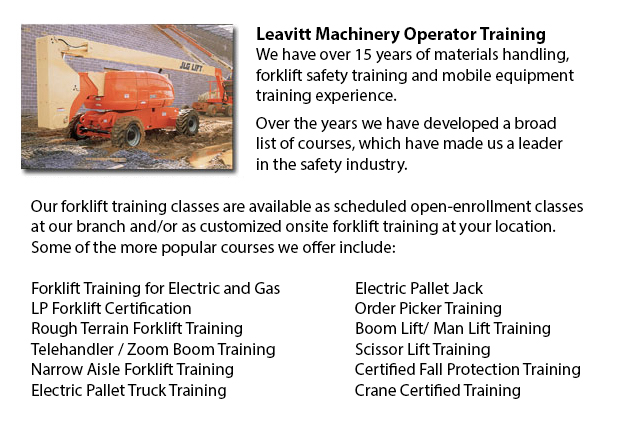
Boom Lift Safey Training Vernon - Boom lifts fall under the type of aerial lifting device or elevated work platform. Most commonly utilized in industry, warehousing and construction; the boom lift is very versatile that it can be used in almost whichever setting.
The elevated work platform is utilized so as to allow access to heights that were otherwise unreachable using other means. There are risks inherent when using a boom lift device. Workers who operate them should be trained in the right operating procedures. Accident avoidance is paramount.
Boom Lift Training Programs cover the safety factors involved in boom lift operation. The program is suitable for those who operate self-propelled elevated work platforms and self-propelled boom supported elevated work platforms. Upon successfully finishing the course, Those who participated would be given a certificate by someone licensed to verify finishing a hands-on evaluation.
Industry agencies, local and federal regulators, and lift manufacturers all play a role in establishing standards and providing information so as to help train operators in the safe utilization of elevated work platforms. The most essential ways to prevent accidents related to the use of elevated work platforms are the following: wearing safety gear, performing site assessment and inspecting equipment.
Key safety factors when operating Boom lifts:
Operators have to observe the minimum safe approach distance (MSAD) from power lines. Voltage could arc across the air to be able to find an easy path to ground.
A telescopic boom must be retracted prior to lowering a work platform in order to maintain stability as the platform nears the ground.
Boom lift workers should tie off to ensure their safety. The lanyard and safety tools should be connected to manufacturer provided anchorage, and never to other wires or poles. Tying off may or may not be needed in scissor lifts, which depends on particular employer guidelines, job risks or local rules.
Avoid working on a slope which goes beyond the maximum slope rating as specified by the manufacturer. If the slop exceeds requirements, then the machinery must be transported or winched over the slope. A grade can be measured simply by laying a minimum 3-feet long straight edge or board on the slope. After that a carpenter's level can be laid on the straight edge and raising the end until it is level. The percent slope is obtained by measuring the distance to the ground (the rise) and dividing the rise by the length of the straight edge. Next multiply by one hundred.
-
Heavy Equipment Training Vernon
Heavy Equipment Training Vernon - The two most common kinds of heavy equipment training are categorized into the categories of equipment; equipment which is fashioned with tracks and those with rubber tires. The tracked vehicle are heavy duty machine... More -
Aerial Lift, Boom Lift, Man Lift, Scissor Lift Training in Vernon
Lift tables or scissor platform lifts could lift up both people and materials vertically. They are most often utilized in industrial, construction and commercial environments. Usually, the use of a scissor lift is to lift and lower materials from one... More -
Crane Operator Classes Vernon
Crane Operator Classes Vernon - Crane operator training is for operators and supervisors of overhead lifting equipment. The course is suitable for both current and new operators. Course content addresses relevant provincial, state and federal safety... More -
Zoom Boom Training Vernon
Zoom Boom Training Vernon - Zoom Boom Training focuses on correctly training potential operators on variable reach forklifts. The training objectives consist of gaining the knowledge of the machine's physics and to be able to define the tasks of the... More -
Skid Steer Ticket Vernon
Skid Steer Ticket Vernon - The lift arms on the skid-steer loader are situated alongside the driver together with pivots at the back of the driver's shoulders. These features makes the skid-steer loader different than the traditional front loader. Be... More -
Manlift Ticket Vernon
Manlift Ticket Vernon - The Elevated Platforms and Manlifts Certification course helps to provide the needed training on the safe operating procedures, work practice, rules and regulations regarding the daily activities for the operators of this mach... More -
Scissor Lift Ticket Vernon
Scissor Lift Ticket Vernon - The scissor forklift has been a great advantage to many businesses in view of the fact that the effort and manpower to run one of these machines is very minimum. Furthermore, numerous workplace injuries have been prevente... More -
Aerial Lift Safety Training Vernon
Aerial Lift Safety Training Vernon - There are roughly 26 to 30 construction fatalities in North America due to the utilization of aerial lifts. Nearly all of the individuals killed are craftsmen like for example painters, electrical workers, laborer... More

Forklift Training Vernon
TOLL FREE: 1-888-254-6157
Vernon, British Columbia
forklifttrainingvernon.com
Email Us
About Us


